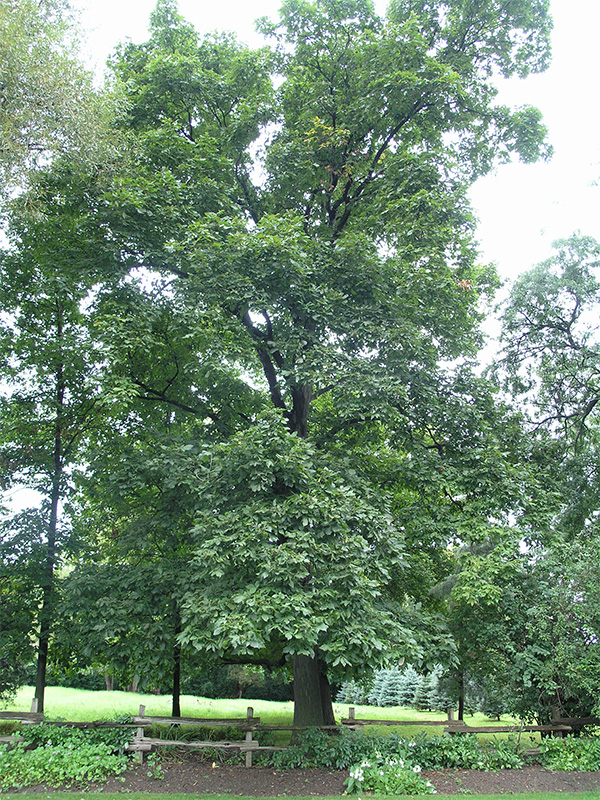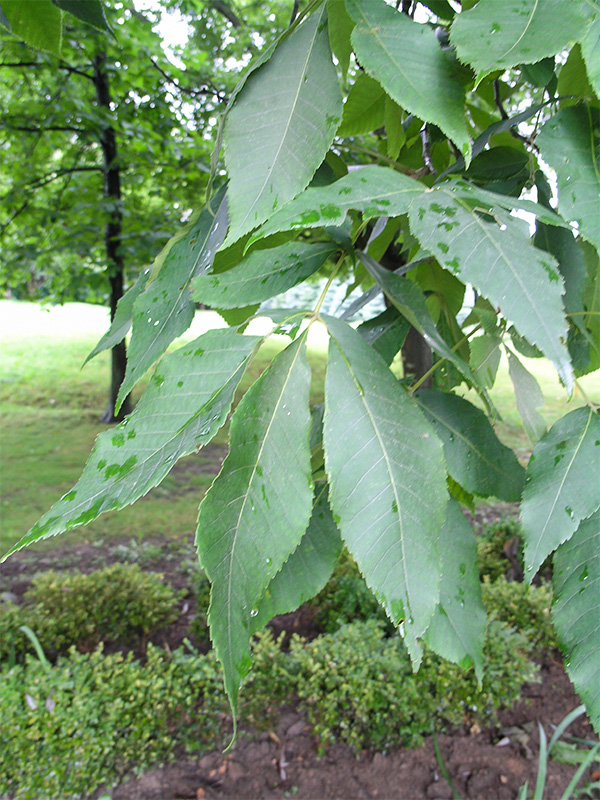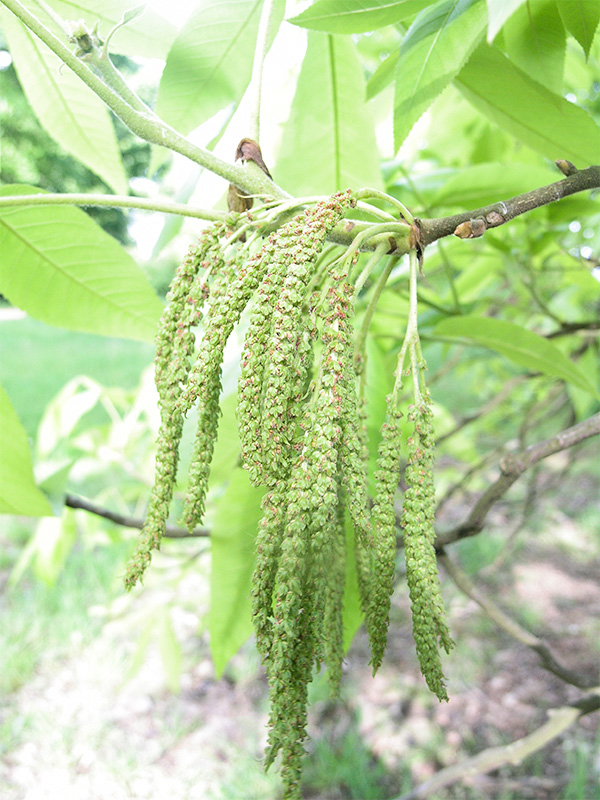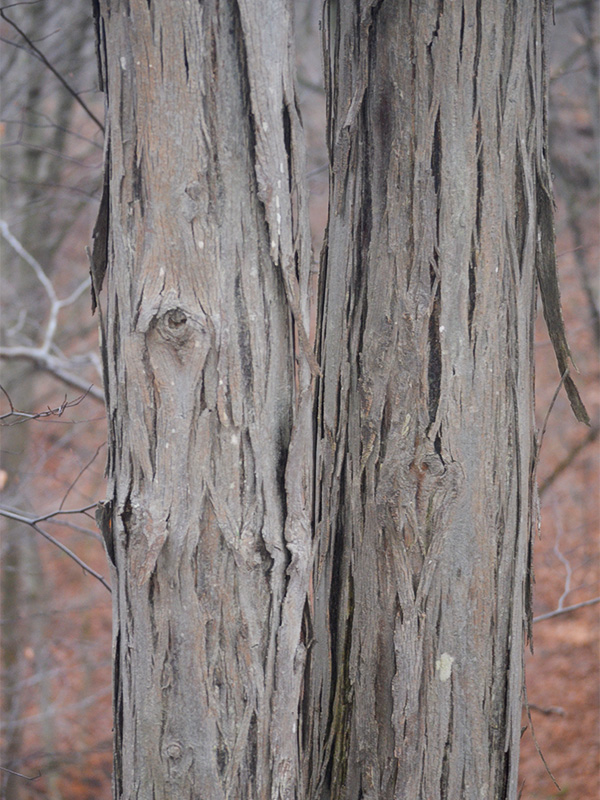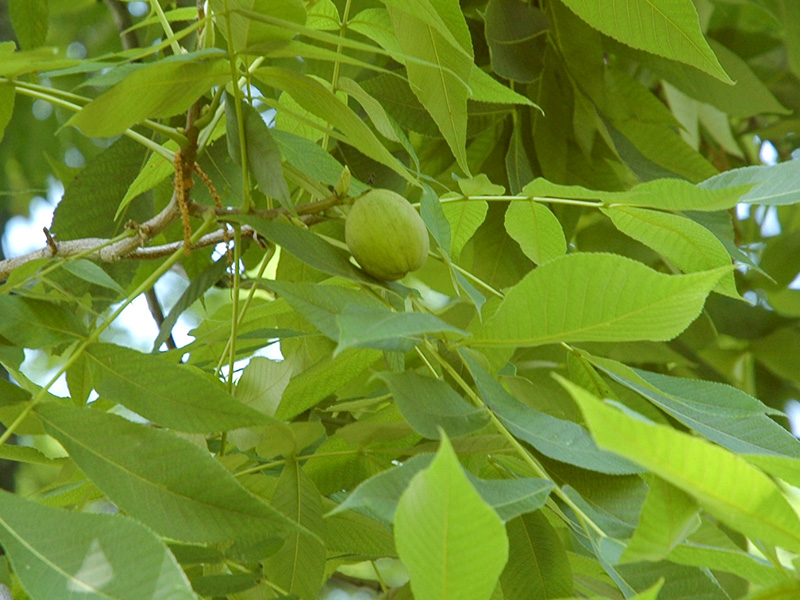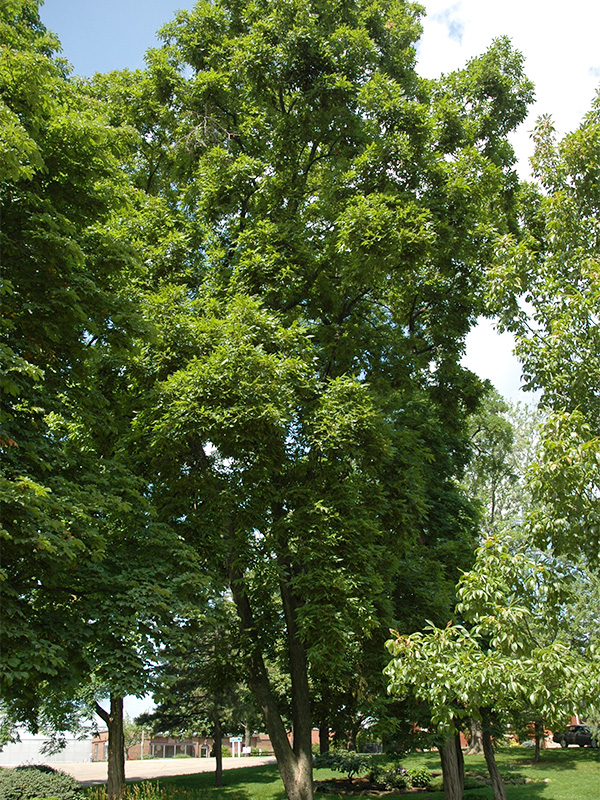
Woody > Carya > Carya ovata > Carya ovata
Carya ovata
Shagbark Hickory
Origin: North America (Quebec to Minnesota) and south to Georgia and Texas.
| Family |
| Juglandaceae |
| Genus |
| Carya |
| Species |
| ovata |
| Category |
| Woody |
| Type |
| Tree (deciduous) |
| Pronunciation |
| USDA Hardiness Zone |
| 4 - 8 |
| Canadian Hardiness Zone |
| 2a - 7a |
| RHS Hardiness Zone |
| H5 - H7 |
| Temperature (°C) |
| -15 - (-20) |
| Temperature (°F) |
| 5 - (-4) |
| Height |
| 21 - 27 m |
| Spread |
| 15 - 21 m |
Photographs
Description and Growing Information
Flowering Period
| Landscape |
| Ornamental use. |
| Cultivation |
| Full sun and partial-shade. Moist, well-drained, rich, humusy loam soils. |
| Shape |
| Large, tall and irregular. |
| Growth |
| Slow |
| Pests |
| Hickory bark bettle, pecan weevil and twig girdler cam be a problem. Anthracnose and leaf spot are occasional diseases. |
| Habitat |
| Climax forests, dry upland wooded slopes, hills, valleys and lowland woods. |
| Bark/Stem Description |
| Trunks mature to 60 - 90 cm in diameter. Young trees bark exfoliates as it ages. The exfoliation is more recurved and pronounced. |
| Flower/Leaf Bud Description |
| Imbricate, terminal 1-2.5 cm long, broadly ovate, blunt pointed with 2-4 ridges. |
| Leaf Description |
| Odd-pinnate, compound leaves, each having 5 finely-toothed, broadly lance-shaped and pointed leaflets. 7 - 17 cm long. |
| Flower Description |
| Non-sowy, monoecious flowers appear in April-May. Male flowers are in pendulous catkins that are 7 - 12 cm long while the female flowers are short spikes. |
| Fruit Description |
| Female flowers give way to an edible, oval-rounded nut. Enclosed in a hick husk that splits open in four sections when it ripens in autumn. |
| Colour Description |
| The leaves are a medium yellowish-green and turn a yellowish-golden brown in autumn. The flowers are greenish-yellow. The bark is grey in colour. |
| Texture Description |
| The bark on young trees are smooth. |
| Notable Specimens |
| The Vineland Research and Innovation Centre, Vineland, Ontario, Canada. Westonbirt, The National Arboretum, Tetbury, Gloucestershire, England. Parkhill Conservation Area, Parkhill, Ontario, Canada. |
| Propagation |
| Nuts, soaked in water at room temperature for 2 - 4 days with water changes 1 - 2 times per day. Stratify in a moist medium at 4°C for 30 - 150 days. Plant in containers, cover with a screen and place outside over winter. Germination in the spring. Produces a pronounced tap root with minimal shoot growth in the first year. Cultivars are budded or grafted on seedling understocks. |
| Ethnobotanical Uses (Disclaimer) |
| Nuts were an important food source to Native Americans and early settlers. Are commercially sold today. Hickory wood is used to cure/smoke meats. Also an excellent firewood/fuel. The wood is used to make a variety of products including tool handles, ladders, gun stocks and furniture. |
